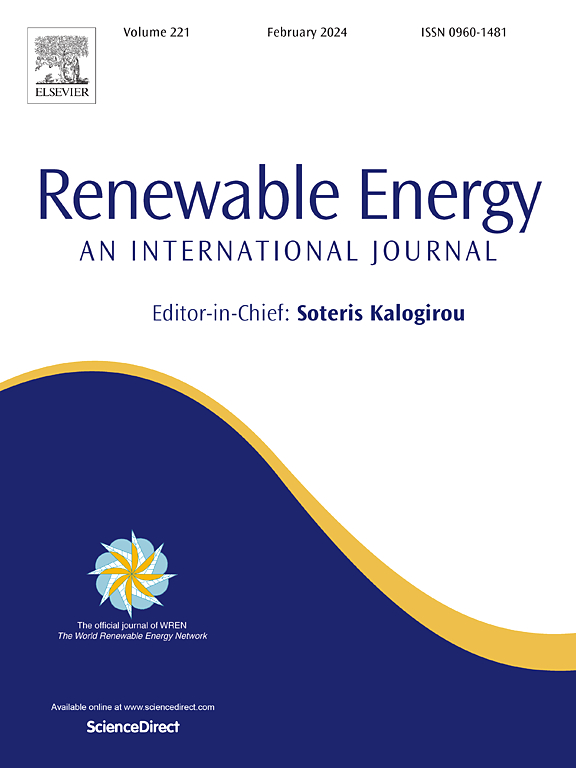Experimental study on high-precision detection technology for the freezing front height in brine on a horizontal cold plate surface in cold regions
IF 9
1区 工程技术
Q1 ENERGY & FUELS
引用次数: 0
Abstract
The formation of ice on wind turbines blades or ship's hull is one of the main problems that energy and transport companies have in cold climates. To ascertain the thickness of brine ice on a horizontal low-temperature cold plate surface, an experimental system based on a capacitively coupled split-ring resonator for detecting the average height of the freezing front in brine has been devised. A static and dynamic freezing front with a 3.5 % salinity and varying heights was prepared and tested at a temperature of −20 °C. The resonant amplitude of the transmission scattering parameter for the resonator exhibited an increase from −19.9 dB to −5.0 dB as the height of the static freezing front increased from 3.2 mm to 21.5 mm. The resonant amplitude demonstrates a monotonic increase with an average sensitivity of 0.51 dB/mm and 4.584 dB/mm as the height of the dynamic freezing front increases within the range of 0–9.5 mm and 9.5–10.5 mm, respectively. The sensor displays an excellent accuracy of 87.8 % in detecting the height of saltwater freezing front in the range of 0–21.5 mm. This method represents a reference in ice detection technology and an effective solution to reduce energy loss due to icing.
求助全文
约1分钟内获得全文
求助全文
来源期刊

Renewable Energy
工程技术-能源与燃料
CiteScore
18.40
自引率
9.20%
发文量
1955
审稿时长
6.6 months
期刊介绍:
Renewable Energy journal is dedicated to advancing knowledge and disseminating insights on various topics and technologies within renewable energy systems and components. Our mission is to support researchers, engineers, economists, manufacturers, NGOs, associations, and societies in staying updated on new developments in their respective fields and applying alternative energy solutions to current practices.
As an international, multidisciplinary journal in renewable energy engineering and research, we strive to be a premier peer-reviewed platform and a trusted source of original research and reviews in the field of renewable energy. Join us in our endeavor to drive innovation and progress in sustainable energy solutions.
 求助内容:
求助内容: 应助结果提醒方式:
应助结果提醒方式:


